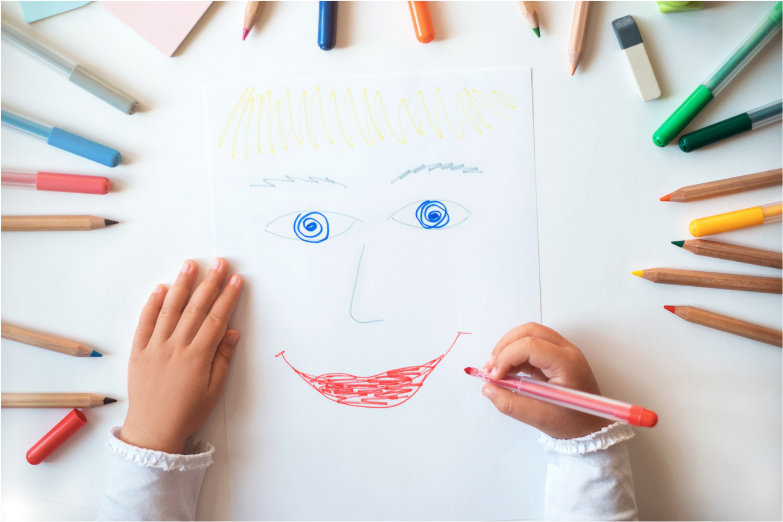Can you tell how someone is feeling by looking at their facial expressions? Chances are you understand that a furrowed eyebrow and wrinkled forehead might mean someone is feeling worried or angry. Or wide eyes and an open mouth might mean someone is feeling surprised or scared.
The ability to read social cues and determine the correlated emotion is a skill that develops over time and has many benefits. Studies have shown children who are better equipped to read emotions from nonverbal cues, form healthier friendships and perform better academically. For example, a friend who notices a sad expression may offer empathy or try to cheer up their peer. This act of noticing and understanding a child’s emotional state and responding accordingly leads to positive interactions. The good news is all children can benefit from explicit teaching of these skills. At Bluejack Kids, we teach the nuances of facial expressions and lay the groundwork for building upon these skills. Check out the video titled Emotion Clues right here!
Learning about emotions can be fun and easily incorporated into the school day. A 2003 study by Grinspan et al. “Improving the ability of elementary school-age children to identify emotion in facial expression” noted that 6 half hour sessions on identification and self-production of facial cues led to improvement in children’s ability to read emotions.
Follow these simple steps to teach emotion knowledge to your students
Pre-Exercise Checklist:
- Choose a set of images of varying facial expressions, such as happy, sad, angry, frustrated, tired, surprised etc. Please note that children respond better to actual photos compared to illustrations or cartoons depicting facial expressions.
- Print your selected photos and laminate them for ongoing use and review. You can also save paper by projecting the various images on your screen.
- If you have a mirror in your classroom, be ready to use it for this exercise. If you don’t, a set of handheld mirrors will serve the same purpose.
2- The Exercise Activities:
Activity 1: Explicit Instruction and Practice Run
- During whole group or small group instruction, teach the emotion corresponding to each image. Discuss the nuances associated with each facial expression and put a lot of intonation in your voice. For example, “Oh, she looks mad! Look how she’s piercing her lips and her eyes and eyebrows are slightly slanted. She also has her arms crossed in front of her. You can definitely tell she’s really mad!”
- After showing each image, have children mimic the facial expression and practice looking at themselves in front of a mirror. Comment on what you see, “Oh, look at all these surprised faces! I see your wide eyes and your wide open mouths!”
Activity 2: Game Time!
- Emotion Scavenger Hunt:
- Assign an emotion to each child and have them cut images from magazines corresponding to each facial expression image.
- Use butcher paper and have students create a collage of emotions.
- Start an emotion journal by assigning a different emotion for each page. Have students glue the images found in magazines to each page.
- Emotions Charade:
- Act out the emotion and have students “guess” the feeling.
- Have students take turns acting out the emotion during centers, free time or on Fun Fridays.
- Take turns stating an emotion-evoking situation and guess which emotion matches the situation. For example, “I took one lick of my ice cream and then I dropped it. How do you think I feel?” Have students show the facial expression matching each example.
Activity 3: Arts and Crafts Time!
- On a blank sheet of paper, draw the outline of a face and ask your students to draw and then write about the emotion associated with their creation.
- With younger students, have them use playdough, string, beads, paint, or any other arts supplies you might have handy to add facial features and talk about the feelings associated with each expression.
Explore more Bluejack Kids videos, lesson plans and activity worksheets here!



